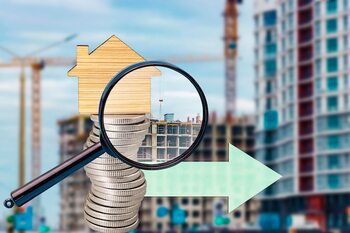The influence of environmental planning on real estate appreciation

Environmental planning is a crucial factor that directly impacts real estate appreciation. In Costa Rica, where nature and urban development must coexist, understanding how land use decisions affect property values is essential. This article will guide you to explore how proper environmental planning not only preserves our environment but also enhances real estate investment, making your property a more attractive and profitable option. Discover why location and nearby services are key to maximizing your investment!
1. The connection between environmental planning and real estate appreciation.
Environmental planning plays an essential role in determining real estate appreciation, as it establishes the foundations for sustainable development that benefits both residents and investors. When policies are implemented that promote responsible land use, such as the creation of green spaces, ecosystem conservation, and access to basic services, more attractive living environments are generated. This improvement in quality of life not only attracts new residents but also increases property values in those areas, which is a clear indicator of how proper planning can be an engine of economic growth.
Moreover, good environmental planning allows for anticipating possible future problems related to uncontrolled urban development and environmental degradation. By incorporating analyses of natural risks and sustainability into urban planning decisions, adverse situations that could negatively affect the property's value are minimized. Properties located in well-planned areas tend to experience consistent and significant appreciation in their value, making the environmental approach not only an ethical responsibility but also a smart strategy to maximize real estate investment.
2. Nearby services: What is considered and why does it matter?
Nearby services refer to the availability of a variety of facilities and amenities that facilitate the daily lives of residents, such as schools, hospitals, supermarkets, and recreational areas. These elements are fundamental in environmental planning because they not only contribute to the overall well-being of the community but also directly influence the attractiveness and value of properties. A neighborhood with access to these services tends to be more desirable for potential buyers or renters, resulting in a significant increase in real estate appreciation. Proximity to essential services can be a deciding factor for those seeking a home, as it reduces the time and cost of daily commuting.
Additionally, having nearby services encourages a more sustainable lifestyle by reducing dependence on private vehicles. This is especially relevant in contexts where there is a desire to balance urban development and environmental conservation. Proper planning of these services can lead to a decrease in carbon emissions and contribute to more cohesive and healthier communities. In this sense, investing in properties located near these amenities not only has positive economic implications but also promotes an environment that prioritizes quality of life and social well-being, making such investments even more attractive to future homeowners and investors.
3. Success stories: Projects that have increased their value through planning
Environmental planning has proven to be a catalyst for increasing the value of various properties in Costa Rica. Projects such as the urbanization of areas near natural reserves have seen a remarkable increase in their value. These initiatives have not only improved the quality of life for their residents but have also attracted investors interested in developing sustainable and environmentally friendly projects. By incorporating green spaces, ecological pathways, and community services, these developments become magnets for those seeking a more balanced lifestyle connected to nature, which, in turn, significantly elevates their market value.
Another successful example is the development of planned communities that integrate green technologies and sustainable practices. These communities not only offer an attractive aesthetic but are also designed to minimize their environmental impact. This is the case with residential projects that implement rainwater harvesting systems and solar panels, which also reduce long-term costs for homeowners. The combination of a commitment to sustainability and modern amenities has resulted in a significant increase in demand for these properties, demonstrating how proper planning can radically transform the local real estate landscape and make investments much more profitable.
4. The importance of access to green areas in increasing property value.
Access to green spaces is a determining factor in property valuation, as it not only improves the quality of life for residents but also increases demand for these spaces. Areas with parks, gardens, and nearby recreational spaces tend to attract families and professionals seeking a healthy and pleasant environment to live in. Furthermore, the presence of green areas is associated with a decrease in stress and an increase in overall well-being, making properties located in these environments more desirable and, therefore, more valuable in the real estate market.
Green areas also contribute to the sustainable development of communities by providing spaces for outdoor activities and promoting an active lifestyle. These features not only benefit current residents but also foster a sense of community and social cohesion. Real estate developers and investors must carefully consider the inclusion of green areas in their projects, as this environmental planning not only enhances the aesthetics of the surroundings but can also result in significant long-term added value. In summary, access to natural spaces translates into economic benefits for both property owners and real estate investors.
5. How environmental regulations impact the real estate market
Environmental regulations play a crucial role in the real estate market, as they establish the parameters within which land can be developed and used. In Costa Rica, where biodiversity is an integral part of the national heritage, these regulations are especially strict. Developers must comply with regulations that ensure the conservation of green areas, water bodies, and local ecosystems. This compliance not only protects the environment but also directly influences the perception of property values; those located in well-planned and protected areas tend to appreciate in value more quickly compared to those situated in deregulated or deteriorated areas.
Additionally, environmental regulations can be a decisive factor for buyers aware of the ecological impact of their decisions. The growing demand for sustainable housing has led to a greater appreciation of properties that meet ecological standards and are located in well-preserved natural environments. This means that real estate investments that respect and promote environmental planning not only contribute to the well-being of the environment but also become more attractive options for potential buyers, which can result in a significant increase in their long-term appreciation. Thus, understanding how environmental regulations affect the market is essential for any investor or owner looking to maximize the value of their real estate investment.
6. The role of sustainable infrastructure in property valuation
Sustainable infrastructure plays an essential role in property valuation, as it not only affects the quality of life of its inhabitants but also increases the area's appeal to potential buyers and investors. The implementation of efficient public transportation systems, green spaces, and eco-friendly technologies in construction are aspects that elevate property values. When a community is developed with a focus on sustainability, a healthier and more accessible environment is created, which in turn can lead to greater demand from those seeking to reside or invest in those areas.
In addition, having sustainable infrastructures such as solar panels, rainwater collection systems, and buildings designed to minimize environmental impact not only contributes to the well-being of the environment but also represents a smart investment. Buyers are increasingly aware of the economic and environmental benefits these features offer. Therefore, properties located in areas where these innovative elements are prioritized tend to experience a significant increase in their long-term value. In this context, it is clear that strategic environmental planning not only protects our natural resources but also acts as a driver for real estate appreciation.
7. Strategies for investors: Identifying areas with high potential through environmental planning
For investors looking to maximize their return on investment in real estate, identifying areas with high potential for environmental planning is a key strategy. Areas where land use plans that prioritize conservation, access to green spaces, and sustainable management have been implemented tend to experience a significant increase in their property value. Additionally, the creation of ecological corridors and the regulation of urban development not only preserve the natural environment but also promote a healthier and more attractive lifestyle for future homeowners and tenants. Therefore, when evaluating a property, it is essential to investigate whether it is located in an area aligned with these planning strategies.
It is also important to consider how environmental policies can influence local infrastructure. Communities that receive investments in sustainable transportation, parks, and recreational areas often see an increase in their real estate demand. Investors should pay attention to proposed or developing infrastructure projects that promote sustainability; these can be indicative of future growth in property value. Furthermore, those localities that have strong collaboration between local authorities and developers to integrate environmental criteria into their urban planning are more likely to attract both residents and businesses interested in establishing themselves there. Understanding these dynamics allows for informed decision-making about where to invest, thus ensuring optimal long-term returns.
8. Future of the Costa Rican real estate market: Trends in planning and sustainable development
The future of the Costa Rican real estate market is increasingly linked to trends in sustainable planning and development. As awareness of the importance of caring for the environment grows, developers and investors are beginning to prioritize projects that integrate ecological and environmentally friendly practices. This trend not only responds to a social demand but also translates into a significant increase in the value of properties located in areas that have been planned sustainably. The creation of green spaces, the preservation of natural areas, and the implementation of efficient infrastructure are just some of the strategies that contribute to elevating real estate value.
Furthermore, environmental planning has become a determining factor in attracting both national and foreign investments. Today's buyers are looking for more than just a property; they want a lifestyle that aligns with their values, including a commitment to sustainability. Initiatives such as the construction of eco-friendly homes, the use of renewable energy, and the promotion of sustainable transportation are gaining ground in this new paradigm. In this sense, public policies play a crucial role by incentivizing developments that meet rigorous environmental standards, which not only benefits the environment but also ensures a constant and lasting appreciation of real estate assets in Costa Rica.



